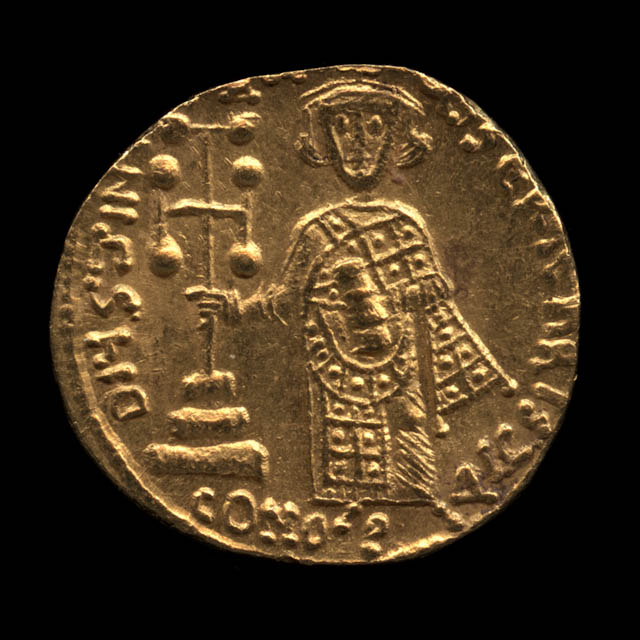
Maker(s): Justinian II (minted under)
Culture: Byzantine
Title: Solidus of Christ
Date Made: 692-696 CE
Materials: Gold
Place Made: Europe; Asia; Turkey; Constantinople
Measurements: 19mm
Accession Number: MH 2004.13.428
Credit Line: Gift of the Estate of Nathan Whitman
Museum Collection: Mount Holyoke College Art Museum

The Solidus is the base unit of Byzantine coinage. With both Jesus and Justinian II pictured on the coin, the symbology draws from the Orthodox Christian tradition of divine right, wherein God appoints the emperors. By placing Justinian II as the “servant of Christ,” he is given authority over the people as the actor of God’s will. However, he had a tumultuous reign, and the symbology may have been a bid for legitimacy.
The coin was minted between 692 and 695 CE, around thirty years before the first debates about the religious use of icons in 726 CE, now commonly called “iconoclasm.” Coins minted during iconoclasm reflect these debates, minted only with representations of emperors. This Solidus of Christ represents one of the last monetary representations of Christ before any depiction was outright banned in 730 CE.

Comments are closed, but trackbacks and pingbacks are open.